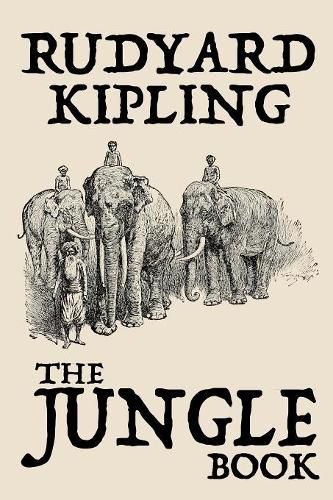Readings Newsletter
Become a Readings Member to make your shopping experience even easier.
Sign in or sign up for free!
You’re not far away from qualifying for FREE standard shipping within Australia
You’ve qualified for FREE standard shipping within Australia
The cart is loading…






This title is printed to order. This book may have been self-published. If so, we cannot guarantee the quality of the content. In the main most books will have gone through the editing process however some may not. We therefore suggest that you be aware of this before ordering this book. If in doubt check either the author or publisher’s details as we are unable to accept any returns unless they are faulty. Please contact us if you have any questions.
The tales in The Jungle Book (1894) – as well as those in The Second Jungle Book (1895) – are fables, using animals in an anthropomorphic manner to give moral lessons. The verses of The Law of the Jungle, for example, lay down rules for the safety of individuals, families, and communities. Kipling put in them nearly everything he knew or heard or dreamed about the Indian jungle. Other readers have interpreted the work as allegories of the politics and society of the time. The best-known of them are the three stories revolving around the adventures of Mowgli, an abandoned man cub who is raised by wolves in the Indian jungle. The most famous of the other four stories are Rikki-Tikki-Tavi, the story of a heroic mongoose, and Toomai of the Elephants, the tale of a young elephant-handler. As with much of Kipling’s work, each of the stories is followed by a piece of verse.
$9.00 standard shipping within Australia
FREE standard shipping within Australia for orders over $100.00
Express & International shipping calculated at checkout
This title is printed to order. This book may have been self-published. If so, we cannot guarantee the quality of the content. In the main most books will have gone through the editing process however some may not. We therefore suggest that you be aware of this before ordering this book. If in doubt check either the author or publisher’s details as we are unable to accept any returns unless they are faulty. Please contact us if you have any questions.
The tales in The Jungle Book (1894) – as well as those in The Second Jungle Book (1895) – are fables, using animals in an anthropomorphic manner to give moral lessons. The verses of The Law of the Jungle, for example, lay down rules for the safety of individuals, families, and communities. Kipling put in them nearly everything he knew or heard or dreamed about the Indian jungle. Other readers have interpreted the work as allegories of the politics and society of the time. The best-known of them are the three stories revolving around the adventures of Mowgli, an abandoned man cub who is raised by wolves in the Indian jungle. The most famous of the other four stories are Rikki-Tikki-Tavi, the story of a heroic mongoose, and Toomai of the Elephants, the tale of a young elephant-handler. As with much of Kipling’s work, each of the stories is followed by a piece of verse.